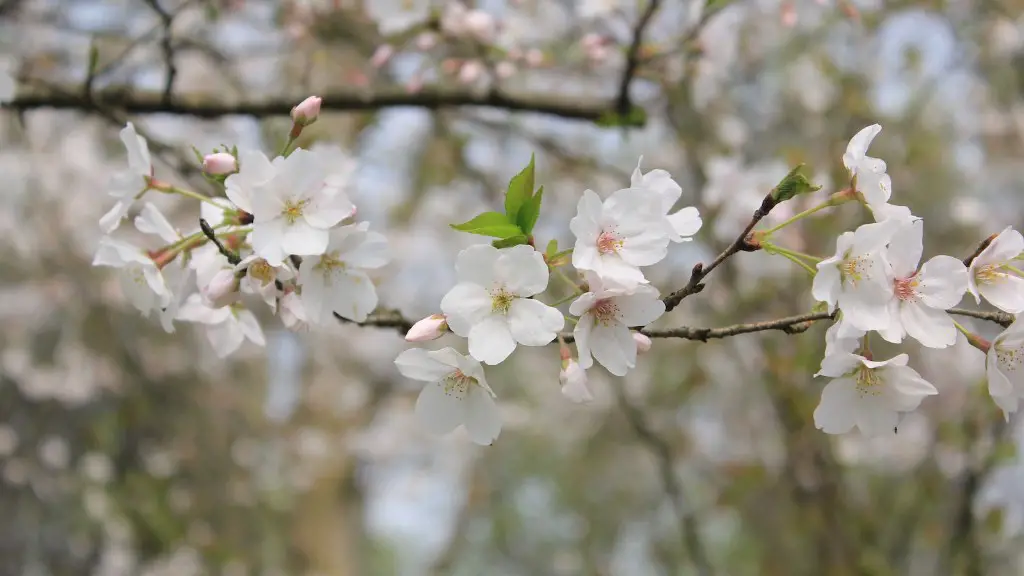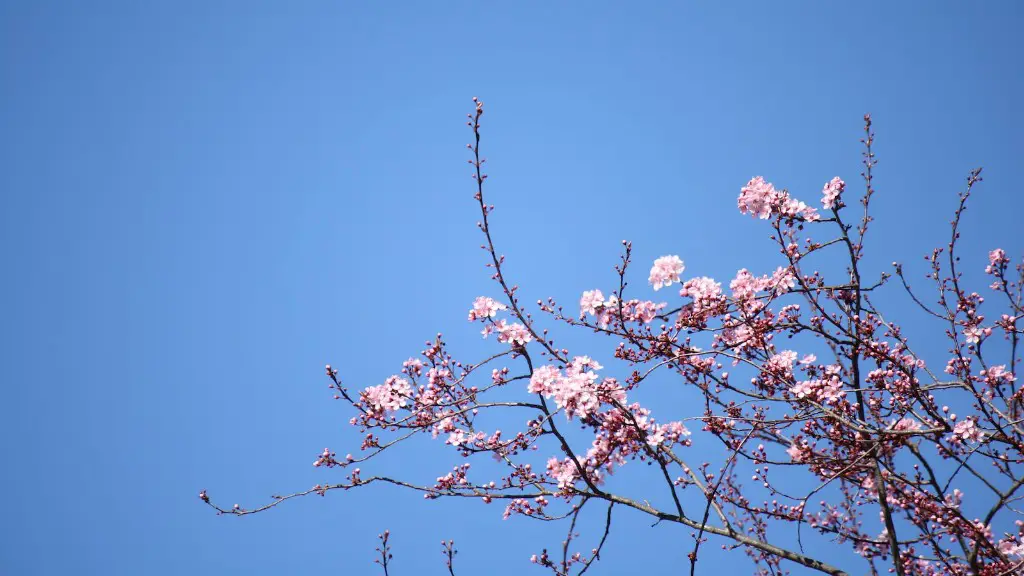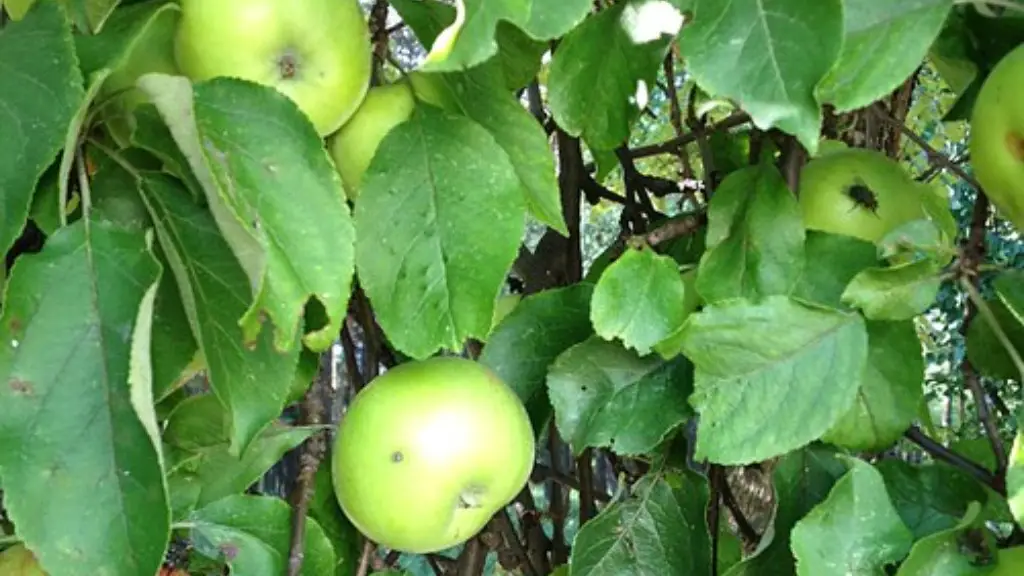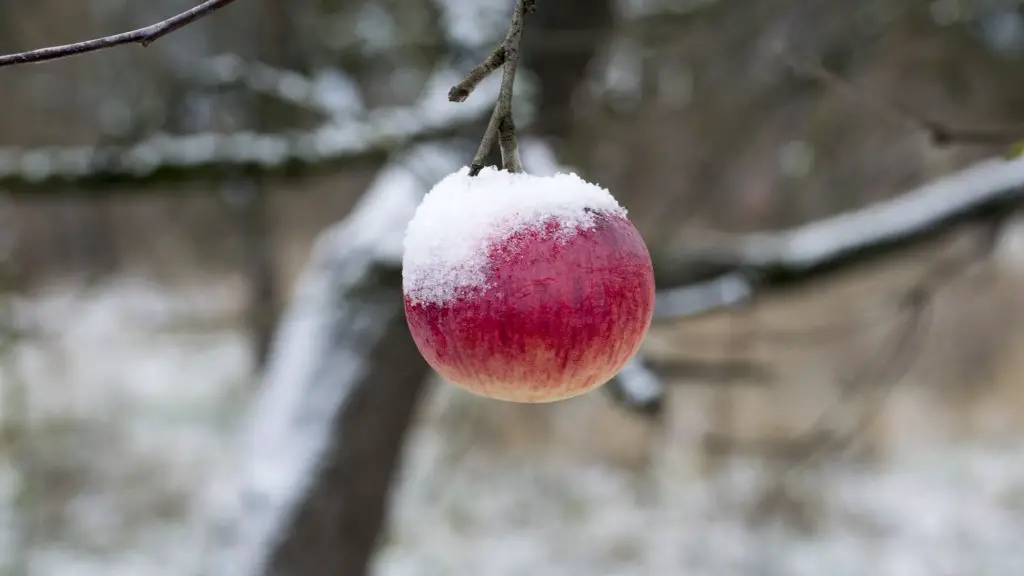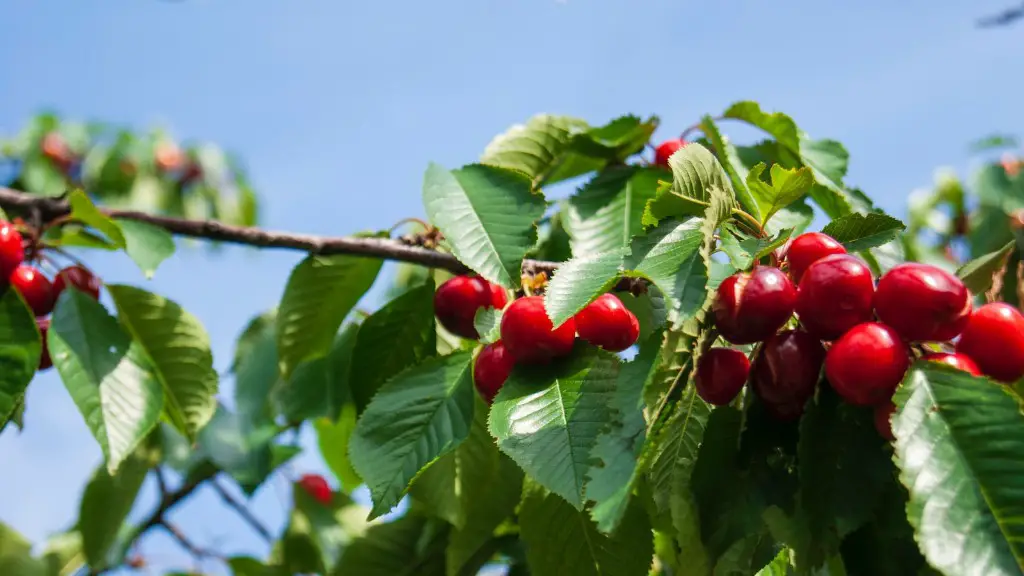Cherry Tree Growth
Cherry trees have long been prized for their fragrant blossoms, delicious fruit, and beautiful fall foliage. Native to East Asia, cherry trees are fairly hardy, and can withstand a wide variety of weather and soil conditions. However, one of the most important parts of caring for a cherry tree is understanding its growth patterns, with an eye to proper pruning and root care. One of the key aspects of cherry tree growth to consider is how far its root system can spread.
Cherry tree roots are generally divided into two types: primary or “tap” roots, and secondary or “feeder” roots. Tap roots grow down deep into the ground, providing a sturdy anchor for the tree. These roots typically reach depths of four to eight feet. Secondary roots, on the other hand, are spread out more widely, typically reaching up to two to four feet laterally. This means that, given the right soil and moisture conditions, a cherry tree’s roots can span up to an impressive twelve feet.
This wide-reaching root system can cause certain problems. If given too much space, the roots can spread out under sidewalks and driveways, eventually pushing them up and causing significant damage. For this reason, it’s important to plant cherry trees in fairly large plots of land, far away from the structures. Alternatively, if planting near a structure, cherry tree roots should be contained and pruned regularly.
In addition to risking damage to nearby buildings, unchecked cherry tree root growth can cause issues for other plants. The cherry tree’s roots may grow under, and will compete with, other trees and shrubs for resources, making it difficult for other plants to thrive. Unrestricted growth can also lead to soil erosion, since the roots can weaken the soil structure.
Given the aggressive nature of a cherry tree’s root system, it’s important to keep a careful eye on the tree’s growth. Pruning roots regularly can help to contain growth and stave off any potential problems. Expert arborists can assess the tree and make a plan for proper pruning, while also providing advice on how to keep a cherry tree healthy.
Identifying Healthy Roots
When it comes to identifying healthy roots, there are several key signs to look for. Healthy root growth is characterized by a consistent spread, with the tap and feeder roots evenly spaced out. The bark should also look smooth and healthy, with no obvious signs of disease.
In general, an established cherry tree root system should be fairly shallow, with most of the tap roots no more than a few feet from the surface. However, if the tree has been planted relatively recently, it’s possible for the tap roots to grow even deeper than usual. To ensure that the roots are healthy, it can be helpful to dig down and assess the root system every few years.
In addition, the soil surrounding the tree should be slightly damp but not waterlogged, to ensure that the tree can obtain the moisture it needs without risking root rot. Finally, any existing root damage should be identified and treated as soon as possible, to prevent the tree from becoming further weakened.
Pruning Cherry Tree Roots
In the absence of regular pruning, a cherry tree’s roots can quickly become rampant and cause problems. Even if a cherry tree is planted in a large plot of land, regular maintenance is necessary to keep the roots contained. The best way to prune a cherry tree’s roots is to gently dig around the base of the tree in late winter, cutting any encroaching roots in the process.
In addition to pruning, consider adding a three to four-inch layer of mulch around the base of the tree. This will help to protect the roots from the elements, while also strengthening the soil around the tree. Organic mulch is particularly effective, as it will break down over time and provide extra nutrients to the tree.
That said, it’s important to be careful when pruning or adding mulch to cherry tree roots. Too much digging or mulching can lead to root damage or suffocation. For this reason, it’s best to contact a professional arborist for advice before beginning any root pruning or mulching.
Factors Affecting Root Spread
As mentioned before, cherry trees can spread their roots up to twelve feet in optimal conditions. However, a number of factors can affect the speed and spread of the roots. For example, the soil type and pH level can play an important role in how far and how fast the roots grow.
In addition, if the cherry tree is located in an area that has been recently built up, it’s possible that the roots will be contained to a smaller area than usual. This is due to the hard, compacted soil in the area, which provides less oxygen and nutrition for the growing roots. If this is the case, it’s important to keep an eye on the tree and prune the roots accordingly.
Finally, be aware that root pruning can also astound the growth of cherry tree roots. If done too frequently or aggressively, pruning can lead to stunted root growth and overall tree health. That said, when done properly and with the guidance of a professional arborist, pruning can help to keep a cherry tree’s roots contained, which will lead to healthier growth.
Encouraging Healthy Root Growth
Apart from regular pruning, there are a few other steps you can take to encourage healthy root growth in a cherry tree. Firstly, it’s important to give the tree adequate space to grow. Avoid planting too close to walls or other structures, as this can impede the tree’s root growth.
In addition, consider giving your cherry tree some added nutrition. A slow-release fertilizer, applied every few months, can give the tree the extra nourishment it needs to grow strong roots. Be sure to consult a professional for advice on the best fertilizer for your particular tree.
Finally, make sure the soil is consistently moist but not soggy. To help with this, consider adding a three to four-inch layer of organic mulch around the tree. This will help keep the soil moist and protect the tree from extremes of weather.
Possible Issues with Cherry Tree Roots
Given the potential for unrestrained cherry tree root growth, it’s important to be aware of possible issues that could arise from the tree’s roots. Firstly, the roots may cause damage to nearby buildings and sidewalks, as they can push up and break the edges. Additionally, in areas with poor drainage, waterlogging can occur. This can lead to root rot, which can damage and eventually kill the tree.
It’s also possible that the cherry tree’s roots may compete with other plants in the area, as they are seeking out resources. This could cause nearby trees and shrubs to become root-bound, or to suffer from lack of nutrition. Finally, unrestrained root growth can lead to soil erosion, as the roots can weaken the structure of the soil.
Wrapping Up
Cherry trees are prized for their beautiful blossoms, delicious fruit, and attractive foliage. But in order to reap these benefits, one must also understand how a cherry tree’s root system grows. These roots can spread up to twelve feet, potentially causing issues for other plants and nearby structures. It’s important to plan ahead when planting, as well as to regularly prune and assess the roots. This will help keep the cherry tree’s roots healthy and contained.
